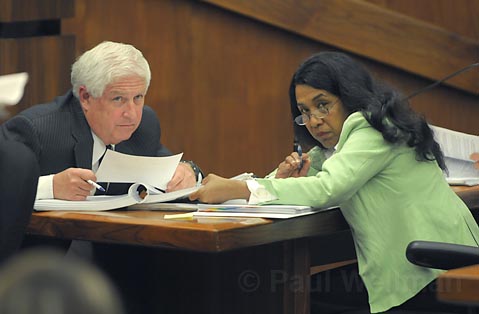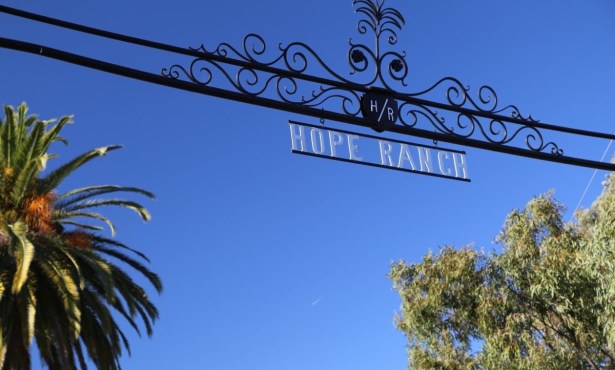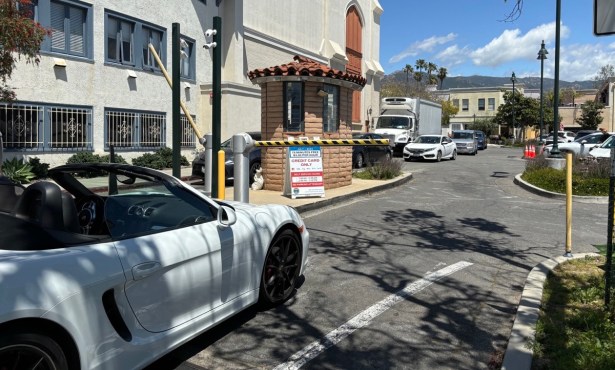County Budget Bludgeoning
That Money's Got to Come from Somewhere

By the time this paper hits the streets, Casa del Mural and Santa Barbara Juvenile Hall could be shut down, hundreds of mentally ill residents may be without services they’ve needed and received for years, or the Public Defender’s office may have operations scaled back to the point where it has too few attorneys to accept cases they’re constitutionally obligated to take. Or all of the above.
With every budget presentation to the Board of Supervisors come more questions about what will be done to put the county in a better position for the upcoming fiscal year, which begins July 1. The proposed budget shows $759.3 million in recommended spending, a $5 million increase over the current fiscal year’s estimated expenditures. But because of slowed revenue and an increase in employee retirement costs-set by the separate entity that is the County Retirement Board-the county should expect to see a service cut of $15 million, according to CEO Mike Brown, as well as another potential $8.4 million from Alcohol, Drug & Mental Health Services (ADMHS). The budget is technically balanced, but the tightrope holding up the balancing act is fragile. Staff has recommended a reduction of 215 full-time positions throughout the county’s workforce of more than 4,000, but salary and benefit costs will increase nonetheless by $20.2 million. Primarily because of retirement costs, the average cost of a full-time position will increase from $97,600 to $106,700.
The cuts come as a result of a $17 billion state deficit, which Governor Arnold Schwarzenegger announced in his May budget revision of his inital proposal and which will cause a $5 million shortfall in state funding for the county’s social services and a $900,000 shortage in public health funding. County Fire also anticipates shortfalls in coming years as a result. The revision did come with a bit of good news, however: The county will be reimbursed the $1.5 million it spent running the February presidential primary, and will also receive $3.5 million in Proposition 42 funds-money raised by fuel taxes that must go to road repair and public transit.
But future problems-such as the possibility that November voters will reject Measure A, the replacement for the expiring road fund Measure D-are in the back of the supervisors’ minds this week while current challenges loom over the boardroom during the hearings, which 2nd District Supervisor Janet Wolf described as “not : a positive experience.” After hitting a peak of $34.7 million this past fiscal year, the county’s reserves are now down to $24.3 million. The board could use that cash to help offset the overall deficit, but with funding problems on the horizon, that may not prove to be a good solution. Perhaps the most obvious new cash commitment will be the new North County jail. The state has already put the county on a short list of jurisdictions set to receive money for a new jail, but first the county must raise matching funds and promise to pay the annual $12 million needed for its upkeep.
The budget hearings certainly won’t be a positive experience, given the stark realities presented to the board during the first two days. Public Defender Greg Paraskou explained Monday that, given the recent number of high-workload cases his department has received, cutting three attorney positions and three other positions would push his department into disaster. “I don’t know what the courts would do if we declare ‘unavailable,'” Paraskou said. Following him, District Attorney Christie Stanley took the podium to explain that if the public defender receives the funding to keep his attorneys, then she should receive funding to keep those slated to be dropped from her office, in order to maintain the two departments’ traditional staffing balance.
In the afternoon session, right before news from the Probation Department that Santa Barbara Juvenile Hall may be turned into a booking facility with all youths being taken to Santa Maria Juvenile Hall, Sheriff Bill Brown outlined nine vacancies, reduced services, and other belt-tightening measures his department is undergoing in “wanting to be a team player” and in trying to balance out custody service and supply cost increases, unrecovered state and federal Zaca Fire costs, and more.
And then there is the county’s ADMHS department, whose current fiscal year $6.9 million deficit was balanced with funds from the county’s reserves. Some supervisors, Wolf and 5th District Supervisor Joe Centeno in particular, have mentioned making ADMHS a priority, and community advocates for mental health services have opposed any cuts that would remove any mentally ill persons from care.
The supervisors are expected to pass a final budget Friday. Check independent.com for updates.



